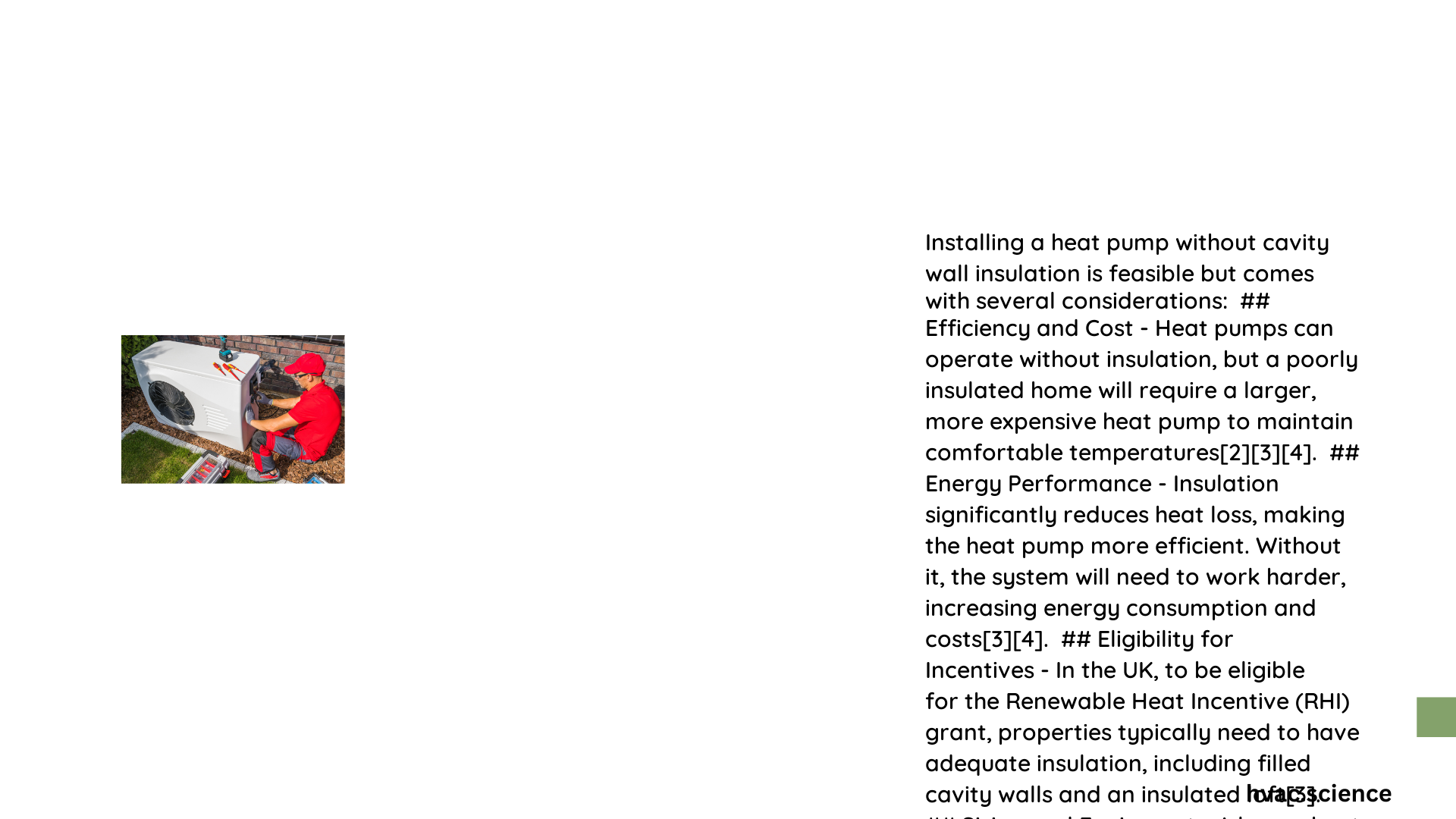Heat pumps can operate in homes without cavity wall insulation, but they face significant performance challenges. Homeowners may experience reduced efficiency, higher energy consumption, and increased operational costs. Understanding these dynamics is crucial for making informed decisions about heat pump installation and potential retrofitting strategies to improve thermal performance and energy savings.
Can Heat Pumps Work Effectively Without Cavity Wall Insulation?
Heat pumps can function in uninsulated homes, but their performance and efficiency are substantially compromised. The lack of proper insulation creates additional thermal transfer challenges that directly impact the system’s overall effectiveness.
What Performance Metrics Affect Heat Pump Efficiency?
| Performance Metric | Uninsulated Home Impact | Well-Insulated Home Impact |
|---|---|---|
| Energy Consumption | 25-50% Higher | Baseline Efficiency |
| Heating Load | Increased Demand | Optimized Demand |
| Operational Cycles | More Frequent | Consistent Cycles |
Key Efficiency Challenges
- Higher Energy Requirements
- Increased thermal loss through walls
- Extended operational periods
-
Greater electricity consumption
-
Thermal Transfer Complications
- Rapid heat dissipation
- Reduced temperature stability
- Increased system strain
How Does Insulation Absence Impact Heat Pump Performance?
Uninsulated homes create substantial challenges for heat pump systems:
- Thermal Envelope Weakness: Walls without cavity insulation allow significant heat transfer
- Energy Efficiency Reduction: Potential 30-50% efficiency loss
- Increased Operational Costs: Higher monthly utility expenses
What Strategies Can Improve Heat Pump Performance?
Recommended Optimization Approaches
- Comprehensive Home Assessment
- Professional energy audit
- Thermal imaging analysis
-
Detailed insulation evaluation
-
Targeted Insulation Retrofitting
- Wall cavity foam injection
- External wall insulation panels
- Draft sealing techniques
What Are the Cost Implications?
Potential Additional Investments:
– Insulation retrofitting: $2,500 – $7,500
– Heat pump system adjustment: $1,000 – $3,000
– Energy efficiency improvements: Variable costs
Technical Considerations for Heat Pump Selection
When selecting a heat pump for an uninsulated home, consider:
- Higher capacity requirements
- Advanced temperature modulation capabilities
- Enhanced compressor technology
- Supplemental heating options
Practical Recommendations
- Prioritize Insulation: Address thermal envelope before heat pump installation
- Choose High-Efficiency Models: Select heat pumps with superior COP ratings
- Consider Supplemental Heating: Implement backup heating strategies
- Regular Maintenance: Ensure optimal system performance
Conclusion

Heat pumps without cavity wall insulation can operate, but with significant performance limitations. Homeowners should view insulation as a critical component of their overall heating strategy.
